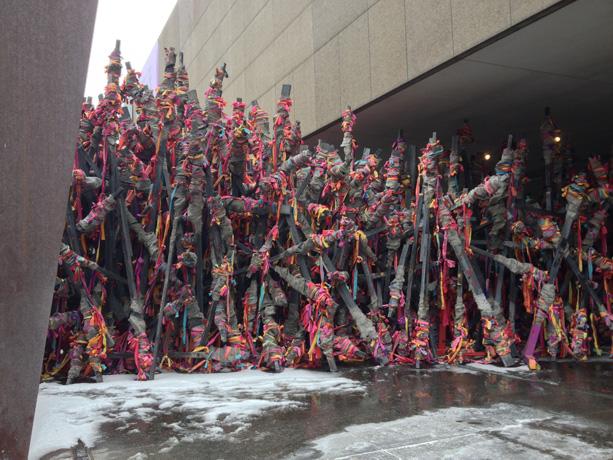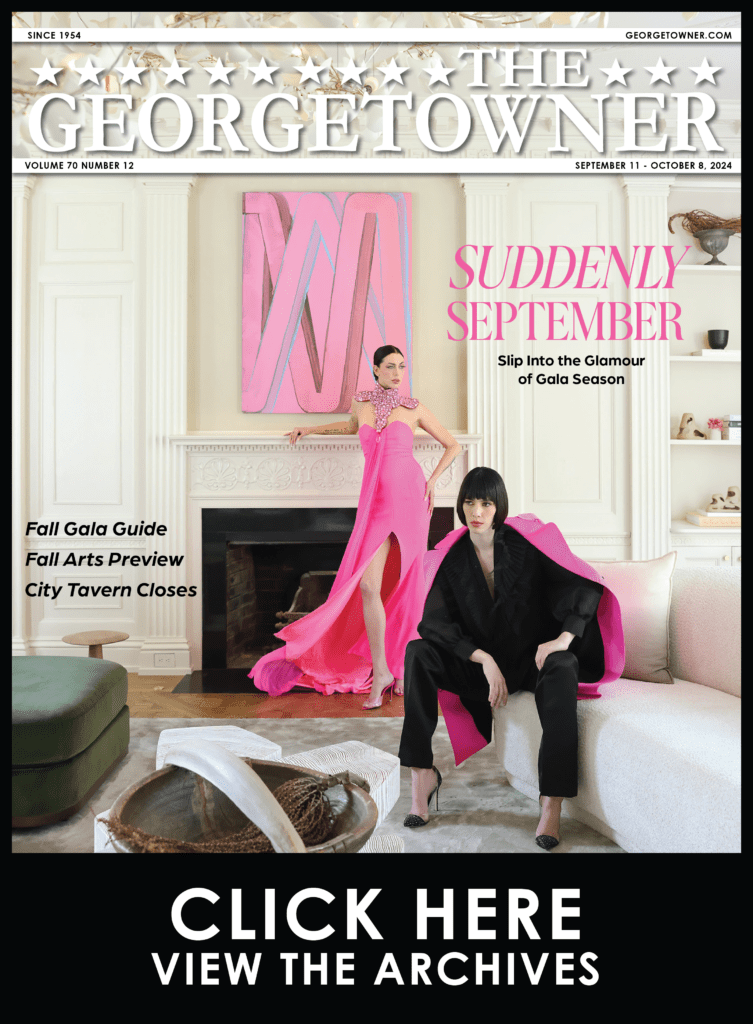‘TIP’ and Lots of Play at Carnegie Museum
By • January 16, 2015 0 1666

In 1974, the stark exterior of the Sarah Mellon Scaife Galleries became the new gateway to Pittsburgh’s Carnegie Museum of Art. Forty years later, it is still bracing to come upon this brutalist addition, designed by Edward Larrabee Barnes, to the Carnegie Institute’s neoclassical buildings.
It was an inspired notion, then, last fall, to install “TIP,” a chaotic exhibit of wooden poles wrapped in steel mesh and colorful strips of fabric. “TIP” is the work of British sculptor Phyllida Barlow. It runs 131 feet from the Forbes Avenue sidewalk to the museum entrance, welcoming visitors to the 2013 Carnegie International, the world’s second oldest international survey of contemporary art (the oldest, the Venice Biennale, began a year earlier, in 1895).
The 2013 Carnegie International, curated by Daniel Baumann, Dan Byers and Tina Kukielski, kicked off last October and continues through Mar. 16. Since the next Carnegie International is at least three years away, it would do well to get yourself to Pittsburgh as soon as you can.
As the Barlow piece suggests, this Carnegie International is serious about play.
One of the largest sections of the show, filling the museum’s Heinz Architectural Center, is called “The Playground Project.” An immersive environment by Tezuka Architects, it combines projects by students in the museum’s summer camps with documentation of innovative 20th-century playgrounds from the United States, Europe and Japan. There is also a playground-themed “sci-fi road movie” by Ei Arakawa and Henning Bohl and – what else? – an actual playground.
Though there is plenty to see, with 35 artists from 19 countries represented, the show is more manageable than most survey exhibitions. However, with the decision to disperse the pieces throughout the museum – even in the attached Carnegie Museum of Natural History, past the dinosaur bones – visitors have to do some navigating. Wear comfortable shoes.
In some cases, the pieces are site-specific. But more generally this approach enables the curators to provide art-historical context and show off the permanent collection, including works from earlier Carnegie Internationals. It also adds a DIY sense of involvement and discovery.
Two of the most captivating installations are in the Hall of Sculpture, viewable both from “ground level” and a perimeter balcony. “The Bidoun Library,” by Negar Azimi, Nelson Harst, Babak Radboy and Ghazaal Vojdani, is an extensive, mobile display of books, magazines, comics and posters, most in Arabic, dealing with “that vast, vexed, nefarious construct known as ‘the Middle East.’”
On the other side of the court is “Disarm” by Pedro Reyes: seven bizarre, self-playing musical instruments making an oval around a sort of drum set, all of which he assembled using 6,700 weapons repurposed from the Mexican drug wars. As visitors wander among them, they go off (so to speak), sounding like electric bagpipes, a xylophone, a rock bass and temple blocks.
The Carnegie Museum of Art is open daily except Tuesdays, with extended evening hours on Thursdays.

